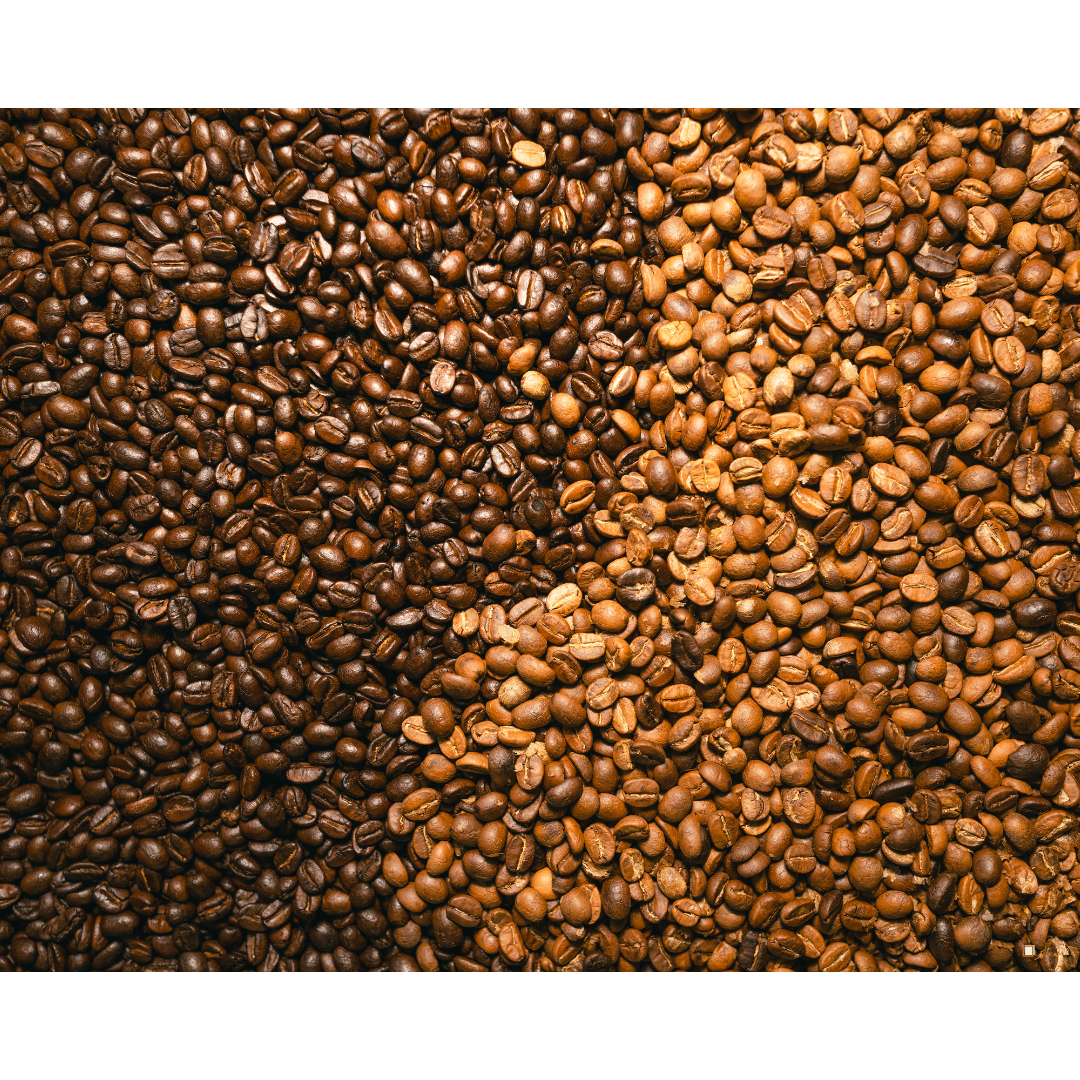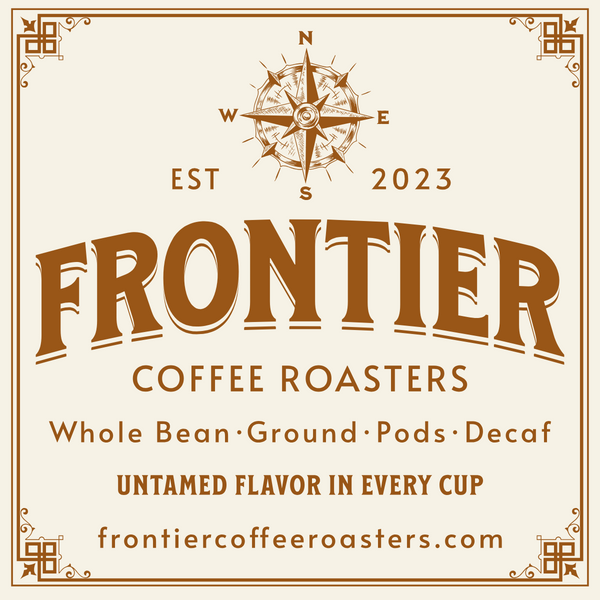
Light Roast Coffee vs. Medium Roast: Which Is Right for You?
For many coffee lovers, choosing the perfect roast is as important as picking the right bean. When it comes to coffee, the roast level plays a significant role in the flavor, aroma, and overall experience of your cup of joe. But with so many options available, particularly between light and medium roasts, how do you know which one is right for you? At Frontier Coffee Roasters, we specialize in crafting small-batch, small batch roasted coffee that highlights the distinct characteristics of each roast level. In this guide, we'll explore the differences between light roast coffee and medium roast to help you make the best choice for your next brew.
Understanding Roast Levels: Light vs. Medium
Before diving into the key differences, it’s important to understand what roasting does to coffee beans. Roasting transforms the chemical structure of green coffee beans, unlocking their flavors and aromas. The length of time and temperature at which the beans are roasted determine whether they fall into the light, medium, or dark roast categories.
Light Roast Coffee
Light roast coffee is roasted at lower temperatures and for a shorter duration than darker roasts. Typically, the beans are removed from the roaster just after the “first crack,” which is an audible pop that occurs when the beans reach a specific internal pressure.
- Flavor Profile: Light roast coffee preserves the natural flavors of the coffee bean. Since it undergoes less roasting, it retains more of the bean’s original acidity, floral, fruity, and even citrusy notes. Coffee from regions like Ethiopia or Kenya, which is known for its bright and fruity flavors, shines in a light roast.
- Caffeine Content: Contrary to popular belief, light roast generally contains more caffeine than darker roasts. Because light roast beans are less exposed to heat, they retain more moisture and thus more caffeine. For those who seek a higher caffeine kick, light roast might be the better option.
- Body: Light roasts tend to have a lighter body, which refers to the coffee’s weight or texture on the palate. The flavor is often described as more delicate and tea-like in its mouthfeel.
- Aroma: Expect bright, fresh aromas with subtle floral and fruity tones. The light roast captures the essence of the bean’s origin, providing a complex bouquet of scents that reflect the coffee's terroir.
Medium Roast Coffee
Medium roast coffee is roasted slightly longer than light roast but does not reach the intense temperatures of dark roast. These beans are roasted past the first crack but pulled from the roaster before the second crack.
- Flavor Profile: Medium roast coffee strikes a balance between the bean’s inherent flavors and the roasting process. The beans develop a richer, more caramelized flavor due to the additional time spent roasting. Expect to taste a mix of fruity and nutty notes, along with hints of chocolate and caramel. This balance often makes medium roast coffee more accessible to a broader range of coffee drinkers.
- Caffeine Content: While medium roast contains slightly less caffeine than light roast, the difference is minimal. You’re still getting a decent amount of caffeine, but without the pronounced acidity found in lighter roasts.
- Body: Medium roast coffee has a fuller body compared to light roast. Its flavor is generally more rounded, making it feel richer and smoother on the palate.
- Aroma: Medium roast brings forward a more toasty, sweet aroma compared to the bright scents of a light roast. You may notice a warm, nutty, or even chocolatey scent when brewing a medium roast.
Key Differences: Light vs. Medium Roast
Now that we’ve covered the basics, let’s break down the major differences between light and medium roasts.
- Flavor: Light roasts are celebrated for their brightness and high acidity, which accentuates fruity and floral flavors. Medium roasts, on the other hand, offer a more balanced flavor with caramel and chocolate undertones that are complemented by a more rounded acidity.
- Body: If you prefer a lighter, tea-like body, a light roast will be more to your taste. For those who like a coffee with a richer mouthfeel and more substance, medium roast is a great choice.
- Caffeine: While light roast coffee contains slightly more caffeine than medium roast, the difference isn’t massive. However, if you’re looking for an extra energy boost, light roast might give you that edge.
- Aroma: A Lighter roast typically has a fresh, bright aroma with floral and citrus notes. Medium roast tends to smell toastier, sweeter, and more comforting with nutty or chocolatey tones.
Choosing the Right Roast for You
The choice between light and medium roast coffee ultimately comes down to personal preference. Here are a few tips to help you decide which roast is right for you:
- If you enjoy bright, fruity flavors and a crisp acidity, light roast coffee may be your best bet. It’s ideal for people who like the idea of tasting the distinct characteristics of the coffee's origin.
- If you prefer a smoother, more balanced flavor with richer caramel or chocolate notes, medium roast coffee might suit your palate better. It’s a versatile option that provides a harmonious blend of the bean’s natural flavors and the complexities developed through roasting.
- For those who prioritize body: If you prefer a light-bodied coffee that is easy to drink, go for light roast. But if you enjoy a fuller, richer body that coats your palate with each sip, medium roast is the way to go.
- Consider your caffeine needs: While both light and medium roasts provide a decent caffeine boost, light roast coffee has a slight advantage in caffeine content due to the shorter roasting time.
Final Thoughts: Experiment and Enjoy!
At Frontier Coffee Roasters, we encourage coffee enthusiasts to explore both light and medium roasts to discover which suits their taste best. Every coffee drinker is unique, and your perfect cup is out there, waiting to be brewed. Whether you prefer the bright acidity of a light roast or the balanced richness of a medium roast, we offer carefully crafted small-batch options to elevate your coffee experience.
The best way to figure out which roast is right for you is to experiment and taste different coffees. Don’t hesitate to try new beans, brewing methods, and roast levels. After all, part of the joy of coffee is the journey of discovery. Happy brewing!

